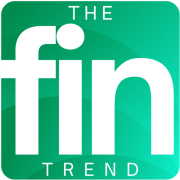Understanding the Pros and Cons of 401(k) Loans in America
The 401(k) plan is one of the pillars of U.S. private retirement savings, allowing workers to accumulate funds for retirement with tax advantages.
Within this system, there is the possibility of taking a loan against the accumulated balance, a practice known as a 401(k) loan.

This article aims to provide a technical and in-depth overview of the benefits and pitfalls of 401(k) loans, covering legal, financial, and long-term planning aspects.
Structure of a 401(k) Loan
A 401(k) loan allows a plan participant to borrow part of their own balance, typically limited to 50% of the vested amount, with a cap of $50,000.
The interest rate is usually the prime rate plus 1 or 2 percentage points, but unlike traditional bank loans, the interest paid goes back to the participant, being reinvested into their account.
The standard repayment term is five years, except when the funds are used for the purchase of a primary residence, in which case the term can be extended.
Repayments are made through automatic payroll deductions, reducing the likelihood of default.
Benefits
1. Quick Access to Liquidity
For those facing financial emergencies, a 401(k) loan can provide capital without going through the traditional credit approval process.
2. Competitive Interest Rate
Compared to personal loans or credit card debt, 401(k) loan rates are usually much lower. Moreover, the interest paid returns to the participant, creating a kind of recycling of capital cost.
3. No Impact on Credit Score
Since there is no credit bureau inquiry (Equifax, Experian, TransUnion), the transaction does not affect the credit score. This is particularly useful for individuals who need liquidity but want to preserve their credit standing.
4. Predictable Repayment Terms
The loan conditions are clear: fixed term, stable interest rate, and monthly payroll-deducted installments. This predictability makes financial management easier.
5. Strategic Use Potential
Some professionals use 401(k) loans strategically—for example, to consolidate high-cost debt or to finance a home purchase, where the potential asset appreciation may outweigh the opportunity cost of temporarily removing funds from the market.
Pitfalls
1. Reduced Growth Potential
The main hidden cost is the impact on compound growth. While the borrowed amount is out of the plan, it no longer generates returns through long-term investments. During strong market periods, this missed opportunity can outweigh the benefit of access to credit.
2. Job Loss Risk
If the participant loses or leaves their job, the loan balance is accelerated. In practice, the debt must be repaid by the due date of the following year’s tax return.
Failure to do so results in the balance being treated as an early distribution, subject to income tax and an additional 10% penalty if under age 59½.
3. Double Taxation on Interest
Although interest is paid “to yourself,” there is a technical caveat: repayments are made with after-tax dollars.
Later, upon retirement withdrawals, the funds will be taxed again, effectively creating implicit double taxation on the interest portion.
4. Impact on Savings Discipline
Frequent use of 401(k) loans can create a short-term mindset, where the retirement account is seen less as a long-term safety net and more as an emergency fund. This behavior undermines the accumulation needed for retirement security.
5. Diversification Limitations
While funds are borrowed, the investment portfolio loses capital available for allocation in stocks, bonds, or funds. This can reduce diversification and affect the risk-return balance of the overall portfolio.
Regulatory and Compliance Issues
The rules governing 401(k) loans fall under the Employee Retirement Income Security Act (ERISA), supplemented by regulations from the Internal Revenue Service (IRS) and the Department of Labor (DOL).
Key requirements include:
- Loan limit of 50% of vested balance or $50,000, whichever is lower.
- A formal written agreement specifying the interest rate and repayment schedule.
- Non-discrimination rules: all eligible participants must have access to the same loan conditions.
Plan sponsors must ensure compliance or face regulatory penalties.
Alternatives to Consider
- Home Equity Line of Credit (HELOC): attractive for those with home equity, with potentially tax-deductible interest.
- Secured personal loans: may offer competitive rates without affecting retirement savings.
- Budget adjustments: in some cases, the solution may lie in cutting expenses or renegotiating existing debts.
